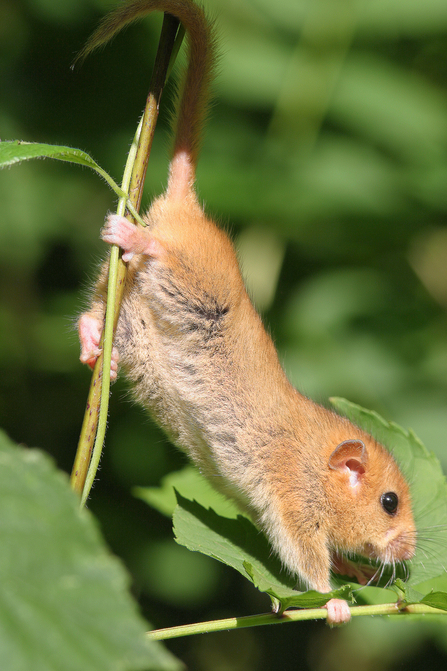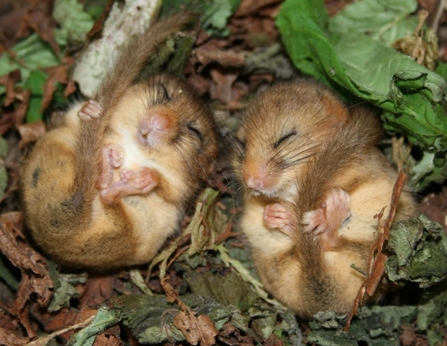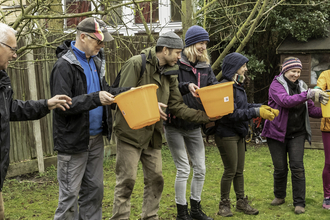I don't know about you but now the clocks have gone back and the nights are drawing in that bit earlier, I'd quite like to curl up and snooze until spring arrives.
It's mild now but autumn and winter can be harsh - frost and snow (or incessant rain) can make food hard to find for our wildlife. Many insects will be buried in the ground or hidden in crevices. Berries, colourful and juicy at the moment, don't last long (thank goodness for ivy and mistletoe). Keeping warm in dropping temperatures is a challenge, taking huge amounts of energy. For species like dormice, which rely on a range of foods that disappear as winter draws in, there is another option to scrabbling to survive. Hibernation!
Hibernation is essentially a deep sleep, where the body is able to conserve energy by reducing temperature, breathing, metabolic and heart rates. It is triggered by shortening day length and hormone changes within an animal that can last for days, weeks or months. It's not just mammals (dormice, hedgehogs and bats in the UK) that benefit from this slowing of systems; a similar strategy by insects is known as diapause and in reptiles it's called brumation.
Hibernation is no small feat. A hedgehog's heart rate can be between 200 and 280 beats per minute when they're awake but in hibernation it slows to just five beats per minute. Whilst asleep, the body is able to drop or raise the metabolic rate to compensate for a change in ambient temperature.






